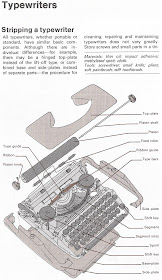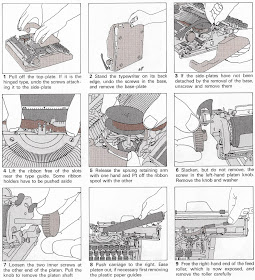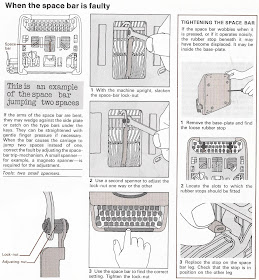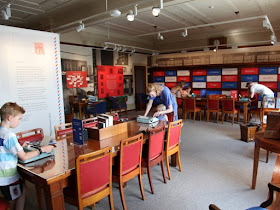Patents for the Royal Empress, which I fully restored late last year.
The
Royal Empress standard manual typewriter typeface was created by an Austrian-born
restaurant waiter, Franz Joseph Halm, of Farmington, Connecticut, in 1960.
Halm, born in Salzburg on August 3, 1916, was issued with patent Des[ign]
191,073 five days after his 45th birthday. It was assigned to the Royal
McBee Corporation of Port Chester, Westchester, New York. Halm, the son of a
machinist at the Royal typewriter factory in Hartford, Connecticut, arrived in
the US with his family in 1923, and by the age of 14 was already a noted
artist. Apart from his work as a waiter at the Marble Pillar Restaurant in Hartford, Halm
continued to paint portraits and was also an instructor in the sport of fencing
at the Greater Hartford YMCA. He died on October 30, 1991, aged 76.
Franz Halm, above, painting in his studio surrounded by fencing gear in 1954,
and below, the noted young artist in 1931, aged 14.
Halm’s patent was for a term of 14 years, and had
well and truly lapsed before a range of lookalike fonts began to appear for digital use. Initially I thought the closest to come to it was F25 Executive,
created by Volker Busse in Düsseldolf in 2008, 33 years after Halm’s patent had
expired. It apparently is based on the IBM Executive Modern font, which is also
the basis for the Testimonial font available for free download on Richard Polt’s The Classic Typewriter Page. Richard attributes Testimonial to the late
journalist Jack Knarr, and it dates to 2009. A more recent font (2012) is the
Cutive, created by the late Englishman Vernon Adams and also based on the IBM
Executive. But Adams doffed his cap to the Smith Premier as well.
Halms outlined what influenced his font
design. He referenced a 1881 movable type patent (D12520) from another
Englishman, James Andrew St James, then manager of the Central Type Foundry on
Jefferson Avenue, St Louis, Missouri. This was a greater lateral proportion
(to its height) extended version of Old Style. Other references came from The
Encyclopedia of Type Faces, by Berry, Johnson & Jaspert, 1958, and were the
Ehrhardt, Imprint, Old Style and Kumlien. The same edition included the
Carolus type.
James St John's 1881 Greater Proportioned Old Style Extended
Ehrhardt
Imprint
Old Style
Kumlien
Carolus
Halm’s font is one of the nicest I have
ever seen on a manual typewriter, and I lean toward the opinion that at least
some of the later online typewriter-style fonts – such those from by Busse and
Adams - were influenced by it. But, then, I'm not much of an expert on fonts, and Tracey Ullman's BBC TV skit sums up my usual attitude:




















































